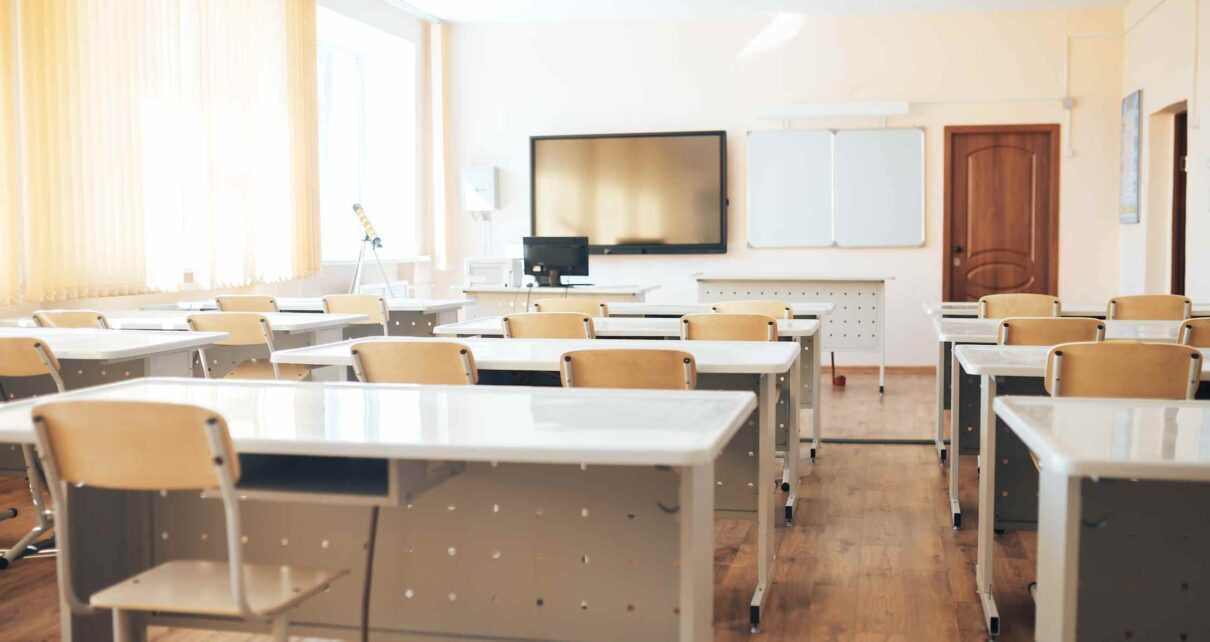In the ever-advancing realm of education, the management of school facilities has taken center stage, with the safety and well-being of students and staff as top priorities. To meet the increasing demands of the educational landscape, facilities management software tailored for schools has evolved into an essential tool. This blog explores the transformative journey of facilities management software in today’s educational environment, highlighting its role in optimizing operations, enhancing safety, and fostering a conducive learning atmosphere.
Facilities Management Software for School: An Educational Necessity
Streamlining Emergency Response
School districts often grapple with emergencies that range from minor incidents like leaky pipes to grave situations such as natural disasters or security threats like active shooters. In these critical moments, instant access to building information is paramount for risk management teams and first responders. However, crucial data is frequently confined to physical record storage rooms or buried within file servers. This delay in accessing vital information can compromise student and staff safety. Here’s where facilities management software, shines by providing rapid access to critical building data, enabling smart and effective responses to emergencies.
Enhancing Productivity and Safety
Efficient facilities management plays a pivotal role in ensuring the safety and well-being of the school community. In the post-COVID era, managing school facilities has become even more challenging due to staff shortages. Even schools equipped with advanced facilities management software may struggle with a backlog of work orders. One major bottleneck in addressing these challenges is the lack of field access to building information. Smart building technology offers a solution by facilitating instant access to building data. This accessibility enhances the productivity of field maintenance teams, ultimately contributing to a safer and more efficient learning environment.
Preventing Deferred Maintenance Issues
The extended closure of school campuses during the COVID-19 pandemic presented additional maintenance challenges. Neglected maintenance, particularly in aging buildings, can lead to emergencies that jeopardize the safety of students and staff. Access to building information in the field becomes critical in addressing these challenges. It enables proactive maintenance, reducing the risk of deferred maintenance issues and associated safety concerns.
Preserving Institutional Knowledge
As experienced facilities team members like engineers and technicians retire or transition to other roles, the risk of losing valuable historical building data looms large. Smart building technology plays a crucial role in safeguarding this knowledge. It empowers school authorities to retain custody of historical building data, facilitating easy sharing with existing and new team members. This ensures the continuity of institutional knowledge and maintains the efficiency of facilities management.
Unlocking the Potential of Asset Management Software
Many schools rely on asset management software to track work orders and inventory. However, when equipment malfunctions occur, facilities teams often lack access to critical operation and maintenance (O&M) data from the field. This is where facilities management software for schools comes into play, offering instant access to O&M information. This integration optimizes efficiency, reduces maintenance backlogs, and enables seamless collaboration with external service providers.
Revolutionizing Data Accessibility
Instant access to building plans, close-outs, O&M documentation, and other crucial building information significantly enhances safety and security measures in schools. This data accessibility extends its benefits to custodial teams and capital project teams, improving their effectiveness. Smart technology streamlines and organizes building data, consolidating it within a mobile app for easy access. This accessibility empowers facilities team members to retrieve information from anywhere, at any time, leading to heightened productivity and safety.
Embracing the Future of Educational Facilities Management
In conclusion, facilities management software designed for schools has transitioned from being a convenience to becoming an educational necessity. It empowers educational institutions to optimize operations, enhance safety, and create a conducive learning environment. As schools continue to adapt to the ever-evolving educational landscape, embracing technology such as facilities management software is pivotal. By doing so, schools pave the way for a future where facilities management is an instrumental component in enhancing the educational experience for students and staff. It ensures that the foundations of safety, efficiency, and excellence are firmly in place.
FAQs: Facilities Management Software for Schools
What is facilities management software for schools?
Facilities management software for schools is a specialized digital solution designed to streamline and enhance the management of school facilities. It assists in tasks such as maintenance, resource allocation, safety compliance, and instant access to building information.
How does school facility management software benefit educational institutions?
School facility management software offers numerous benefits, including improved safety, enhanced productivity, reduced maintenance backlogs, preservation of historical building data, and more efficient operations.
Can school facility management software help schools respond to emergencies effectively?
Yes, school facility management software provides instant access to critical building information, enabling quick and informed responses to emergencies. This feature is crucial for ensuring the safety and security of students and staff.
How does facilities management software enhance productivity for schools, especially in the post-COVID era?
In the post-COVID era, schools face staffing challenges. Facilities management software helps by providing instant access to building data from the field, thereby enhancing the productivity of maintenance teams and ensuring a safe learning environment.
Can facilities management software prevent deferred maintenance issues in schools?
Yes, facilities management software helps prevent deferred maintenance issues by enabling proactive maintenance. Access to building information in the field ensures that problems are addressed promptly, preventing them from becoming larger and costlier issues.
How does school facility management software safeguard historical building data when experienced staff members retire or leave?
School facility management software preserves historical building data, making it easily accessible to current and future team members. This ensures the continuity of institutional knowledge and efficient operations.
Does school facility management software integrate with asset management software used by schools?
Yes, many school facility management software solutions seamlessly integrate with asset management software. This integration enhances efficiency by providing instant access to operation and maintenance (O&M) data, reducing maintenance backlogs, and facilitating collaboration with external service providers.
How does instant access to building information enhance the safety and security of schools?
Instant access to building information strengthens safety and security measures in schools. This data is invaluable during emergencies and supports the work of custodial teams and capital project teams, enhancing overall security.
Is facility management software for schools accessible via mobile devices?
Yes, facility management software for schools often includes mobile applications. This allows facilities team members to access vital information from anywhere, at any time, improving productivity and responsiveness.
Why should educational institutions invest in school facility management software?
Educational institutions should invest in school facility management software to optimize operations, enhance safety, and improve overall efficiency. It is a crucial tool for modernizing facilities management, ensuring the well-being of students and staff, and providing a conducive learning environment.




